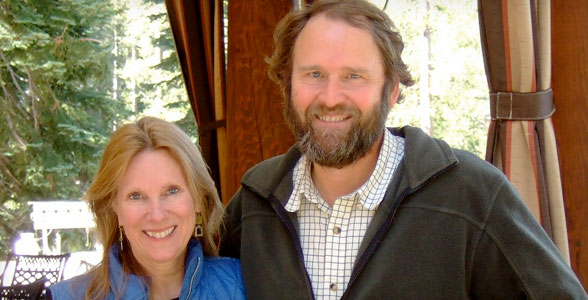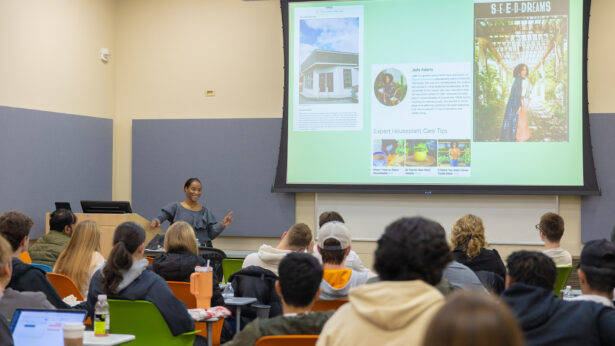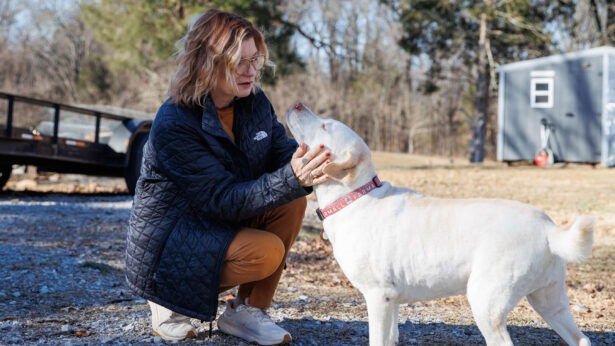By Tom Adkinson
It’s a long and winding road—and hiking trail—from Tennessee to the remote backcountry of California’s Giant Sequoia National Monument, but a couple of UT graduates have successfully negotiated the journey.
From late spring to early fall, Suzanne and Burr Hughes leave behind their home in Memphis for their four-year-old luxury camp in the California wilderness. Sequoia High Sierra Camp, situated at 8,000 feet in the rugged Sierra Nevada mountains, is a destination with unexpected amenities.
Suzanne, who earned a master’s degree in education as a reading specialist at UT Knoxville in 1974, teaches intensive English classes for international students at the University of Memphis. Burr earned a bachelor’s degree in communication (advertising) in 1976, worked at Southern Living magazine, and then followed his father into the insurance and financial services industry.
Tennessee guests at SCHS have a long journey. The route: Fly to Fresno, rent a car for a 60-mile drive into the mountains, gain about 7,000 feet in elevation, negotiate a serpentine one-lane road to the Marvin Pass Trailhead, and then hike a mile to the camp.
Suzanne greets you with an iced tea and an oatmeal cookie made from a Peabody Hotel recipe. It’s an unexpected touch of Southern hospitality.
SHSC offers camping in a style that few experience. When I’m this deep in the backcountry, I don’t expect a 336-square-foot canvas bungalow, a king bed, double-sheeted duvets, Pendleton blankets, hot showers, and, oh yes, a chef. (The hot showers are a few yards down the trail, so there’s at least that element of roughing it.)
SCHC is a 40-acre private enclave in the 49,000-acre Giant Sequoia National Monument, federal land that butts up against Sequoia National Park (America’s second oldest) and Kings Canyon National Park. Suffice it to say that when you finally get to SCHC, you’re seriously in the boondocks, making the concept of a luxury camp both bizarre and appealing.
Burr—who still remembers the mandatory typing test he took to become an advertising major and his courses with professors such as Richard Joel, Kelly Leiter, and Don Hileman—says a more primitive backcountry camp run by a concessionaire in Yosemite National Park inspired them. SCHS is the Hughes’ business on land they own.
“There was a lottery just to get a reservation at Yosemite, so I saw what became Sequoia High Sierra Camp as a great business investment. It’s something we could put money into and have fun with while watching it grow and remaining Memphians,” Burr says.
 With SCHC as a base, you can take day hikes (my favorite was to Mitchell Peak’s above-the-tree-line crest of 10,365 feet), fish, or swim in alpine lakes and meander through groves of the largest trees on earth, the giant sequoias. Giant sequoias—don’t dare call them redwoods, which are entirely different—grow only in a relatively small zone on the Sierra Nevada’s western slope.
With SCHC as a base, you can take day hikes (my favorite was to Mitchell Peak’s above-the-tree-line crest of 10,365 feet), fish, or swim in alpine lakes and meander through groves of the largest trees on earth, the giant sequoias. Giant sequoias—don’t dare call them redwoods, which are entirely different—grow only in a relatively small zone on the Sierra Nevada’s western slope.
The camp is eco-friendly (buildings made with sustainable lumber, natural landscaping, low-flow toilets and showers, sustainable menu items, propane lanterns), capitalizing on Burr’s master’s degree in architecture with an emphasis in sustainable design from England’s University of Cambridge.
SCHC has 36 bungalows scattered up a steep hillside. At the center of camp is an open-air dining pavilion modeled on an Etruscan temple. Gentle breezes and golden sunsets accompany dinner.
The scenery is spectacular, but the food also astounds—scallops capriccio, Alaskan halibut, osso bucco, crabcakes, Muscovy duck breast (which you won’t find at the Peabody), tableside Caesar salad, airy Italian cheesecake. The meals are a far cry from backpackers’ trail food.
They’re the handiwork of Ryan Solien, whose credentials include training at the California Culinary Institute, cheffing for Faith Hill and Bruce Springsteen, and running restaurants in the U.S., Bermuda, and Rome. The occasional Italian influence comes from Solien’s dual U.S.-Italy citizenship.
Your dining companions are another unexpected benefit. Suzanne says the camp attracts an engaging and chatty clientele, mostly Californians so far, but some from the East Coast and a few international guests.
During my visit, I spent time with a sailing instructor, a photographer, a gynecologist, a lawyer, an energy consultant, a pastry chef, and a six-year-old who was certain he’d grow up to be a Navy pilot.
Wildlife is abundant, so first-time guests need to be told that the in-room amenity that looks like a small beer keg actually is a bear-proof container for personal food and scented items. My only wildlife visitor was a hummingbird, prompting me to open the windows and prop open the door so it could escape my bungalow.
Winter limits operation of SHSC to mid-June through mid-October. The rest of the year the Hughes are in Memphis, dealing in the insurance industry as part of the Edward Burch Group and helping international students get comfortable with English. Their daughter, Marion, handles reservations and other customer relations activities.
When summer rolls around, however, Suzanne is back in the High Sierra serving cookies, while Burr counsels guests not on insurance, but on which trails they’re likely to enjoy most.
Getting there: The closest major airport to Sequoia High Sierra Camp is Fresno, although Sacramento has more service. Rates are $300 per night per person; information is at sequoiahighsierracamp.com; phone (866) 654-2877.
Tom Adkinson, who earned a journalism degree at UT Knoxville in 1972, lives in Nashville and has written articles for publications nationwide. His normal camping accommodation is an 8 x 8 Coleman tent.)



